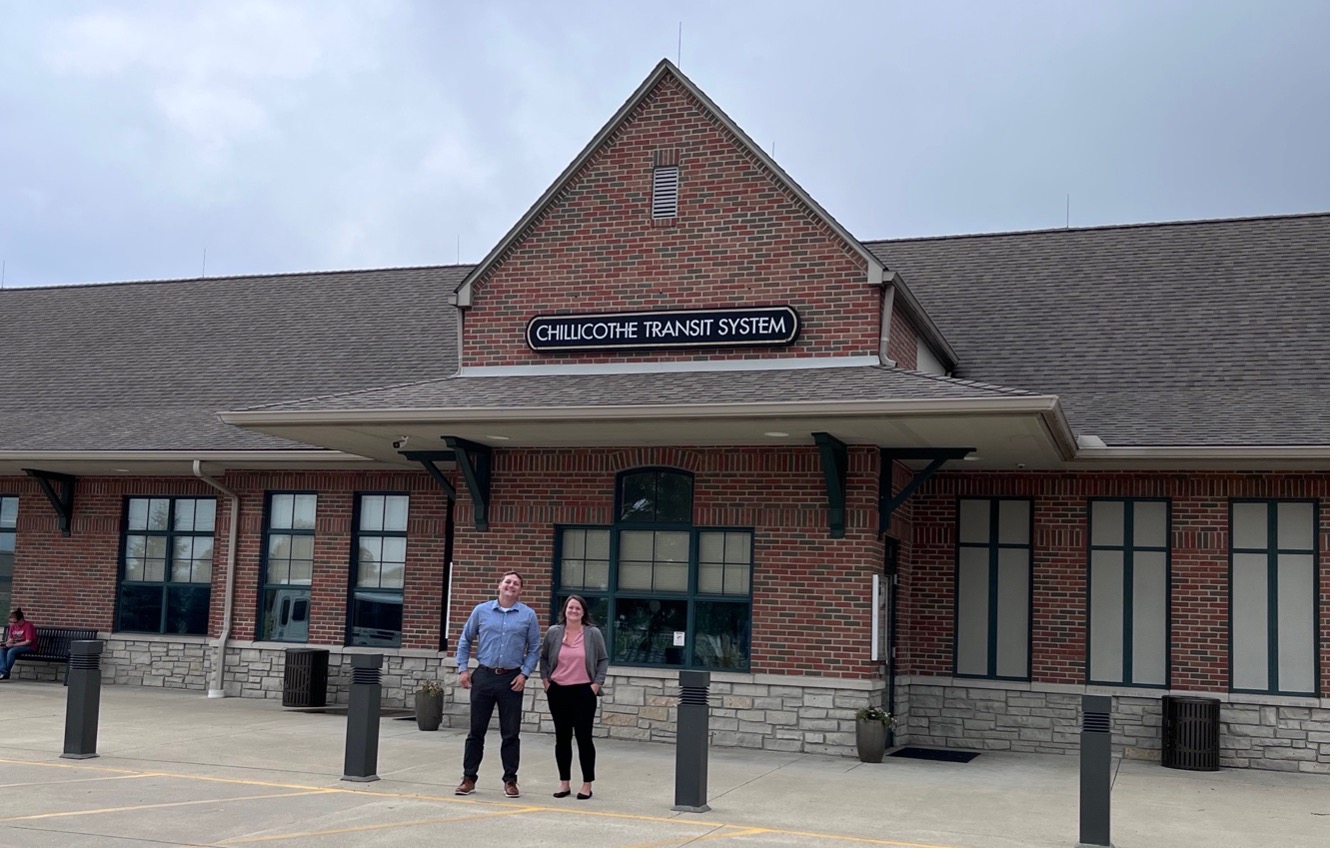The City of Chillicothe, the county seat for Ross County, a rural Appalachian County is the second largest in the state.
Covering over 20 square miles while serving a population of 22,000, Chillicothe serves as the hub for Ross County and the surrounding counties in Southern Ohio, providing access to medical, food, employment, and social service agencies for the region. Chillicothe experiences higher than state average rates of poverty and educational attainment, with some of the worst health outcomes in a state that ranks near the bottom nationally. Further, the city suffers greatly from the opioid epidemic, with the county having higher rates of overdoses per capita than the major metropolitan cities in Ohio including Columbus, Cincinnati, and Toledo. Since its existence, Chillicothe Transit has only operated on a fixed-route service which has left a large portion of the city’s neighborhoods without transit access and for those who did have a nearby bus stop, long inefficient routing requiring wasted hours on the bus, late arrivals to appointments or work, and being dropped off at a location that still requires a significant amount of walking without the built infrastructure of sidewalks to do so safely.
Following a 9-month Human Design Thinking planning process, Chillicothe Transit, with Federal Transit Administration funding made available through the NCMM Ready to Launch funding, launched a 12-month pilot of on-demand service for the public. Service will be available within the City of Chillicothe limits, with extensions of service just outside the city limits to service the VA Hospital, Regional Health System, and three major employers for the communities. A team of 12 city and partner staff from varying levels of management and across departments was established to participate, including the transit dispatch, transit director, and the Ross County mobility manager as transportation leaders. The team quickly developed, from initial community interviews, a project statement to: Redesign Chillicothe Transit to move more people more places and compel the broader community to take a fresh look at the system. The three focus target populations that were engaged through each step of the process were current riders (mostly seniors, low-income, transit-dependent), choice riders (those who have a personal vehicle and do not rely on transit), and visitors. The program’s nine months were spent understanding the problem followed by generating and testing new ideas.
The principles of human design thinking, a human-centered approach to innovation that integrates the needs of people, incorporate the possibilities of technology, and the requirements for program success. Aaron Kennedy, Chillicothe Transit Director shared how “the process took us away from the silos we work in and reached out to really understand the needs of the community.” “It was enlightening to work as part of a team and develop innovative approaches to improving transit” stated Aaron, “but that alone was not enough.” It was the testing phase, where we immersed ourselves into the community, involving those that utilize the service to ask how it can be improved, asking those who don’t, what could be done to allow transit to work for them. Individuals interviewed virtually, in person at the hub or on the bus, or through group meetings. In addition to gathering direct feedback from hour-long interview sessions, literature reviews looking at case studies and best practices were conducted and included in the feedback. Residents were engaged in co-design sessions virtually and through pop-up.
Idea creation sessions at the Transit Hub, on the bus, and highly utilized bus stops. More than 200 ideas were generated from residents. The ream established long-term impacts and design criteria to narrow down the ideas to eventually two ideas were identified as having the most impact and the most questions/assumptions needing tested that were moved forward to the prototyping phase.
Aaron added, “that learning a human centric approach, has drastically changed my perception on how problems should be resolved. A person cannot truly understand the scope of a problem unless they have dealt with it personally. The closest someone can come to that understanding is by having it explained to them by a person who has experienced it. They can then work together to find, prototype, and implement a solution, based on the stakeholder’s input. Without the human centric approach, there will most likely be a solution to a problem that doesn’t actually exist, or there will be problems that exist that remain unknown and therefore unresolved.”
The On Demand pilot has provided more efficient and increased services to two hospitals and the VA Medical Center creating more flexibility with patient appointments, less wait times and less time spent needed for these healthcare appointments. Employees of these healthcare sites as well as other industry are now recruiting from a larger workforce as the flexibility and expanded service area has allowed transit to become a commuting option for their employees.
For more information on Human-Centered Design, NCMM Community Mobility Design Challenge, Limited Launch Grant, or Ready to Launch Funding opportunities explore NCMM’s website or email NCMM Deputy Director, Bill Wagner.

